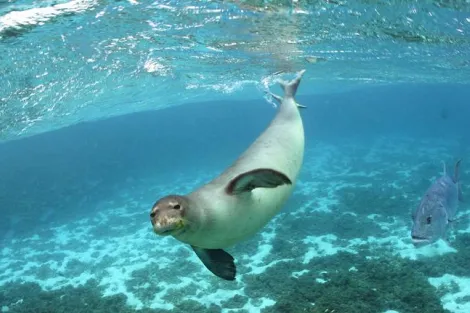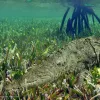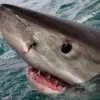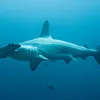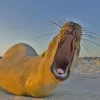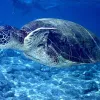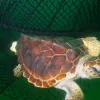The critically endangered Hawaiian monk seal (Monachus schauinslandi) is one of hundreds of marine species that can be found cruising the waters of Papahānaumokuākea, a chain of islands northwest of the main Hawaiian archipelago. Despite living in protected habitat, Hawaiian monk seals frequently become entangled in fishermen's nets, threatening their survival. It's estimated that only around 1,200 individuals survive today. Watch a recorded webcast about the latest efforts in Greece to study and save the critically endangered Mediterranean monk seal.
Backbone of Biodiversity at Risk
The International Union for the Conservation of Nature (IUCN) maintains the Red List of Threatened Species, an inventory of the global conservation status of plants and animals. In a 2010 study, researchers concluded that one-fifth of the world's vertebrates (animals with backbones) are threatened with extinction. Meet some of the marine vertebrate species that are among those threatened in this image gallery.
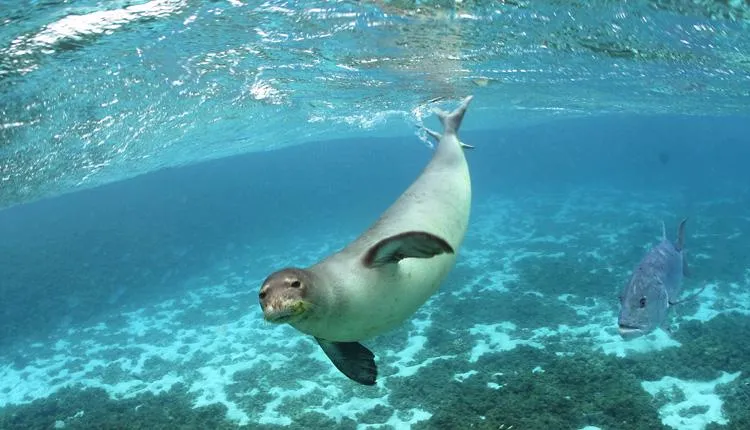
Hawaiian Monk Seal
Credit: James Watt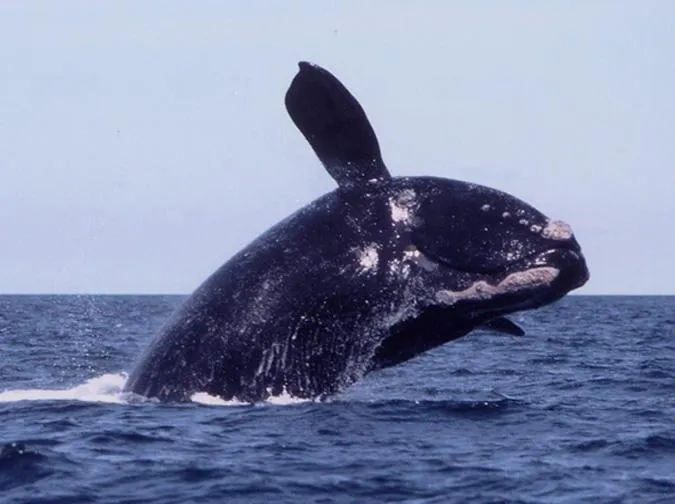
North Atlantic Right Whale
Credit: Courtesy of the New England AquariumThe North Atlantic right whale is one of the world's largest animals, but scientists estimate that fewer than 450 remain. In the past, they were hunted for their oil and baleen; now they get tangled up in fishing lines, which weaken and eventually kill them. Meet a right whale named Phoenix, and learn more about their biology and why so few remain.
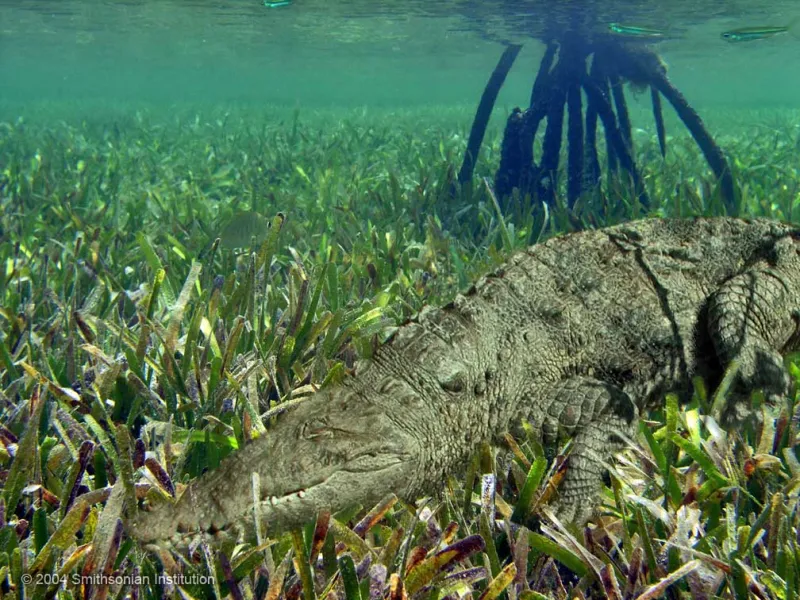
American Crocodile
Credit: © 2004 Smithsonian InstitutionAmerican crocodiles are most commonly found in mangrove-lined estuaries, seagrass beds, and saltwater lagoons between the southern coast of the United States and the northern coasts of South America and Mexico. They are considered "Vulnerable" by the IUCN Red List, having undergone a population decline of 30% over the last three generations because of hunting for their hides and habitat loss. However, when their habitat is protected, their populations can recover, as has occurred in Florida.

Great White Shark
Credit: © Michael RutzenGreat White Sharks are marvels of evolution, with highly-evolved senses keeping them among the ocean’s top predators. However, they are threatened with extinction and listed on the IUCN Red List as "Vulnerable." Their biggest (and, perhaps, only) threat is people. Great whites are often portrayed as terrifying man-killers, which makes them a target for sport fishing and trophy hunters, who don't understand that humans do far more damage to sharks than sharks do to humans. They also can be killed by protective beach meshing, and are losing inshore habitats used as nursing grounds to encroaching development.
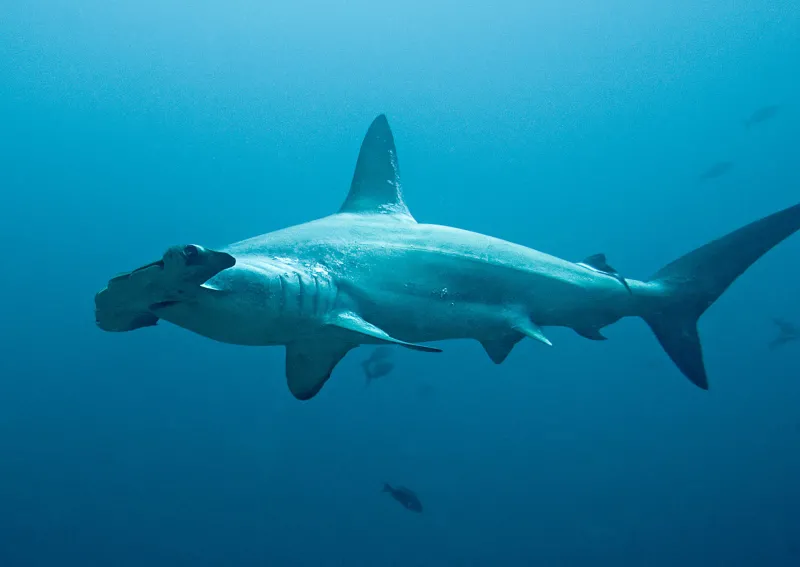
Scalloped Hammerhead Shark
Credit: © Terry Goss 2008/Marine PhotobankA scalloped hammerhead Sphyrna lewini at Isla del Coco, Costa Rica. Illegal shark fishing along with increasing demand for shark fin soup has led to the removal of 95% of endangered scalloped hammerheads from the ocean.
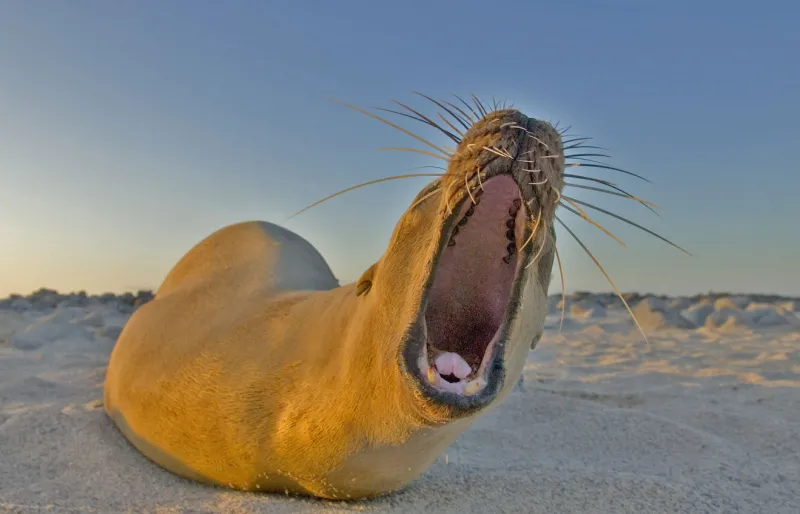
Galapagos Sea Lion Yawning
Credit: Rod Mast/Marine PhotobankA Galapagos sea lion (Zalophus wollebaeki) rests on a beach in Ecuador. The population of these charming animals swings wildly during El Niño events, but is declining overall. They are currently listed as endangered on the IUCN Red List. See more pictures of animals at risk.
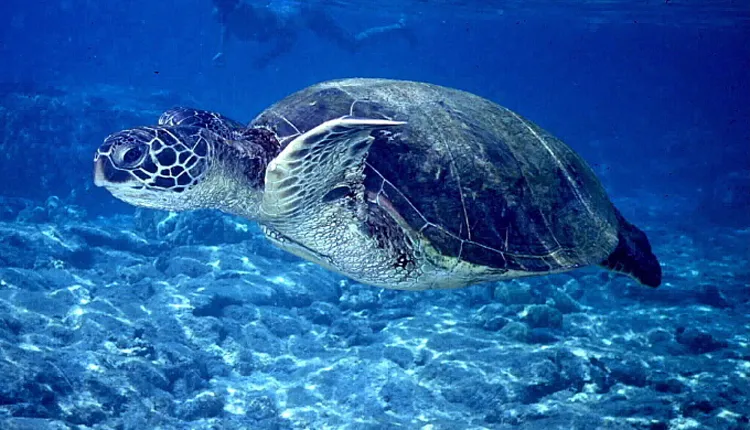
Green Sea Turtle
Credit: Steve TurekA diet of algae and seagrasses gives this turtle (Chelonia mydas) greenish colored fat—and its name. Weighing as much as 500 pounds, the threatened green sea turtle lives its life at sea, with only females coming to shore to lay eggs. See a slideshow with more pictures of beautiful but threatened animals, and meet the seven species of sea turtle.
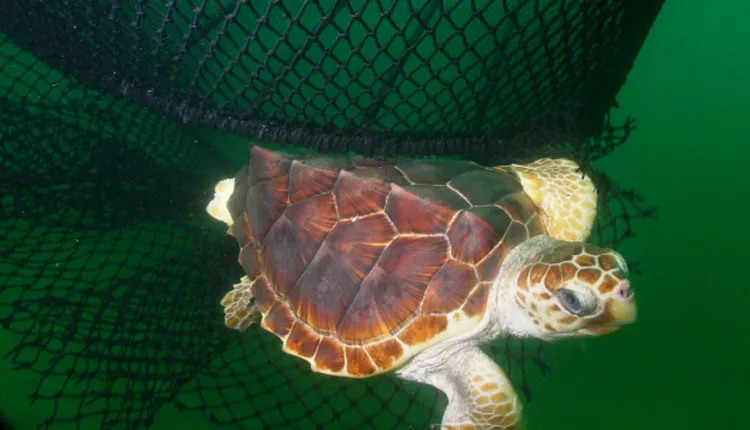
Loggerhead Escapes from Fishing Net
Credit: NOAAOne of the biggest threats to sea turtles, such as the loggerhead turtle (Caretta caretta) pictured here, is being accidentally caught and killed in fishing nets. Trapped in a net, the turtles are dragged through the water with no access to the surface to breathe, causing them to drown.
To address this problem, NOAA Fisheries worked with the shrimp trawling industry to install escape hatches into their nets called Turtle Excluder Devices, or TEDs. A crosshatch of bars in the middle of the net create a grid large enough for small shrimp to pass through, but not turtles and other large animals. When they hit the grid, they can then swim out through a hole in the net and escape.
Before TEDs were installed, an estimated 70 to 80 percent of turtle strandings on beaches were caused by shrimp nets. But since they were installed by U.S. shrimpers in the Gulf of Mexico in the late 1980s, strandings caused by shrimp nets are estimated to be down by at least 44 percent.


